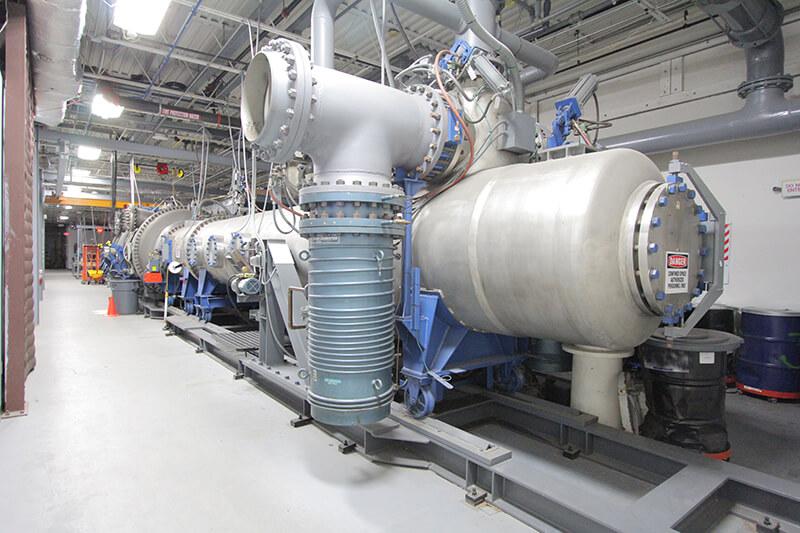The Weekly Debrief: Hypersonic Testing Emerges As New Layer Of U.S.-China Rivalry

HYPULSE
An intensifying competition between China and the U.S. over the mastery of high-speed flight produced another first: Dueling openings of hypersonic wind tunnels.
In a sign of the rising scale and seriousness of the hypersonic competition, the wind tunnel announcements came within three days of each other.
On June 2, China announced opening of the JF-22 hypervelocity test facility at the Institute of Mechanics in a northern suburb of Beijing.
On June 5, Purdue University held a media preview for the Hypersonics and Applied Research Facility (HARF) in West Lafayette, Indiana, which will open officially on June 6.
The HARF will reactivate the historic and relocated Hypersonic Pulse test facility and inaugurate a new “quiet” hypersonic wind tunnel that is designed to eliminate aerodynamic noise.
Both countries are now spending billions to develop expendable and reusable hypersonic technology for weapons, aircraft and spaceplanes. Since hypersonic flight experience remains rare compared to the supersonic and subsonic regimes, the millions now being poured into long-term test infrastructure offer a clear sign of long-term competition by both countries, says Mark Lewis, CEO of the Purdue Applied Research Institute.
“When I look at programs, and especially in China, I have to tip my hat and say, well, they're making long term investments. They're building facilities. They're investing in universities. That's how we knew originally that they were serious,” said Lewis, the former acting deputy undersecretary of defense for research and engineering.
“And that's how we know we're serious,” Lewis added, noting the opening of the $41 million, 65,000 ft2 HARF campus at Purdue, which also includes a hypersonic materials research center. “We're investing in these facilities, we're building these connections between academia and industry. We’re investing in the future workforce, students, undergraduates, graduate students, at all levels. That’s the mark, in a sense, that we’re serious about hypersonics as well.”
In China, the JF-22 is the latest and most advanced piece of a national network of test facilities for high-speed flight. The 167-m.-long tunnel, which includes a 4-m.-dia. test chamber and a 2.5-m nozzle outlet, is designed to produce wind velocities up to about Mach 30, which supports the test requirements for spaceplanes and other orbital re-entry vehicles. The five-year effort to open the JF-22 follows the previous completion of the FD-21 hypersonic shock tunnel that supports speeds up to Mach 15 and the JF-12 tunnel that can hold experiments up to Mach 9.
By comparison, the HARF’s facilities re-introduce the Mach 25 test capability of the 45.7-m.-long HYPULSE and the Mach 8 limit of the Air Force Research Laboratory-funded quiet wind tunnel.
The history of the HYPULSE speaks to the boom-and-bust nature of U.S. interest in hypersonic flight. The facility was opened at NASA’s Langley Research Center in Virginia in the late 1960s, then shut down in 1983. The launch of national programs such as the Orient Express and Delta Clipper revived the facility, which was reactivated at GASL’s research campus in Ronkonkoma, New York, in 1987. The facility continued operating after GASL was acquired in 2003 by Alliant Techsystems, which later became part of Northrop Grumman.
Left inactive in New York for several years despite its unique capabilities, the HYPULSE facility was donated by Northrop in 2020 to Purdue’s HARF campus. The facility was disassembled, moved to West Lafayette and rebuilt with new instrumentation and diagnostic equipment to support modern test needs.
With U.S. hypersonic test facilities facing backlogs of months or even more than a year, the openings of HYPULSE and the quiet wind tunnel will help relieve the bottleneck, while offering some of the most advanced testing capabilities in the country. Lewis recalled meeting with a few NASA engineers about hypersonic programs a couple of weeks ago.
“One of them said, ‘Gosh, I wish we had that HYPULSE facility,’” Lewis recalled. “And I smiled and said, ’It turns out you do.’”
